Bearing Pipes
Pipes designed for bearing loads, offering high strength and durability.
Seamless pipes are extensively applied for the nuclear device, gas, petrochemical, ship building and boiler industries.
Seamless pipes find applications across various industries and sectors due to their strength, durability, and reliability. Here are some common applications of seamless pipes categorized by industry:
Seamless pipes are commonly used in various industries for different applications. Here are some of the main uses of seamless pipes:
It's important to note that the above applications are just a few examples, and seamless pipes have a wide range of uses in many other industries and sectors where reliable and efficient fluid transportation is required.
| Steel Grade | Standard | Application | |||
|---|---|---|---|---|---|
| GB(China) | ASME(USA) | DIN/EN(Euro) | JIS(Jpan) | ||
| Carbon steel | 10 20 20G 20MnG 25MnG Q345B/C/D/E |
A106 SA-106B SA-106C SA-192 SA-210A1 SA-210C |
St35.8 St45.8 P235GH P265GH |
STB340 STB410 STB510 |
Economizer tube Water wall tube, pipeline, header pipe, Petrochemical furnace tube, heat exchange tube |
| Mo steel | 15MoG 20MoG |
SA-209 T1 SA-209 T1a SA-209 T1b |
16Mo3 | 15Mo3 16Mo3 |
Water wall tube Superheater tube Reheater tube |
| Cr-Mo Steel Cr-Mo-V steel |
12Cr1MoG 12Cr2MoWVTiB |
12Cr1MoV 14MoV63 |
Superheater tube Reheater tube, Pipeline, Header pipe, Petrochemical furnace tube, Heat exchange tube |
||
| Cr-Mo-Steel Cr-Mo-W Steel Cr-Mo Steel Cr-Mo-W steel |
12CrMoG 15CrMoG 12Cr2MoG 10Cr9Mo1VNbN 10Cr9MoW2VNbBN 12Cr1Mo 12Cr5Mol/NT 12Cr9Mol/NT |
T11/P11 T12/P12 T22/P22 T23/P23 T24/P24 T5/P5 T9/P9 T91/P91 T92/P92 |
10CrMo5-5 12CrMo4-5 10CrMo9-10 7CrWVMoNb9-6 7CrMoVTIB10-10 X10CrMoVNb9-1 X10CrWMoVNb9-2 X11CrMo5+l/NT X11CrMo9-1+l/NT |
STB20 STB22 STB23 STB24 STB25 STB26 |
Superheater tube, Reheater tube, Main steam pipe, Pipleline, Header pip, Petrochemical furnace tube, Heat exchange tube |
| Carbon steel Ni steel |
16MnDG 10MnDG 09DG |
A333-1 SA-333-1 A333-6 SA-333-6 A333-3 SA-333-3 |
STPL380 STPL450 |
Tube & pipe for Low-temperature service | |
| Austentic Stainless steel | --- | AP304 TP304H TP321 TP321H TP347 TP347H TP316 TP316H S30432 TP310HCbN |
--- | Superheater tube Reheater tube |
|
| Pipe types | Pipe Szie(mm) | Tolerances | |
|---|---|---|---|
| Hot rolled | OD | <50 | ±0.50mm |
| ≥50 | ±1% | ||
| WT | <4 | ±12.5% | |
| ≥4-20 | +15%, -12.5% | ||
| >20 | ±12.5% | ||
| Cold drawn | OD | 6-10 | ±0.20mm |
| 10-30 | ±0.40mm | ||
| 30-50 | ±0.45 | ||
| >50 | ±1% | ||
| WT | <1 | ±0.15mm | |
| >1-3 | + 15%, – 10% | ||
| >3 | + 12.5%, – 10% | ||
For pipe over 10 inches as a special OD tolerance pipe, the OD shall within vary +1% /-1%.
| Standard | Hot finished seamless tube | Cold flnished seamless tube | ||
|---|---|---|---|---|
| Out diameter (mm) |
Tolerance | Out diameter (mm) |
Tolerance | |
| EN10216-1 EN10216-2 DIN17175 |
≤100 | +/-0.75% (min.+/-0.5mm) |
All | +/-0.5% (min. +/-0.30mm) |
| >100 | +/-0.90% | |||
| GB/T 3087 | ≤460 | +/-0.75% (min.+/-0.5mm) |
10-30 | +/-0.40mm |
| >30-50 | +/-0.45mm | |||
| >50 | +/-1.0% | |||
| GB/T 5310 GB/T 9948 GB/T 6479 |
<57 | +/-0.40mm | ≤30 | +/-0.20mm |
| 57-325 | +/-0.75% | >30-50 | +/-0.30mm | |
| >325-460 | +1%,-2mm | >50 | +/-0.8% | |
| ASME SA-179M ASME SA-192M ASME SA-209M ASME SA-210M ASME SA-213M JIS G 3461 JIS G 3461 |
≤101.6 | +0.4, -0.8mm | <25.4 | +/-0.10mm |
| >25.4-38.1 | +/-0.15mm | |||
| >38.1-50.8 | +/-0.20mm | |||
| 101.6-190.5 | +0.4, -1.2mm | >50.8-63.5 | +/-0.25mm | |
| >63.5-76.2 | +/-0.30mm | |||
| >76.2 | +/-0.38mm | |||
| ASME SA106 ASME SA335 |
≤48.3 | +/-0.40mm | ≤48.3 | +/-0.40mm |
| 48.3-114.3 | +/-0.79mm | |||
| 114.4-219.1 | +1.59, -0.79mm | |||
| 219.2-323.9 | +2.38, -0.79mm | >48.3 | +/-0.79mm | |
| >324 | +/-1.0% | |||
For standard pipe, except as provided for thin-wall pipe, the tolerances of diameter shall be in accordance with the following table:
| Standard | Hot finished seamless tube | Cold flnished seamless tube | ||
|---|---|---|---|---|
| Out diameter (mm) |
Tolerance | Out diameter (mm) |
Tolerance | |
| EN10216-1 EN10216-2 DIN17175 |
≤100 | +/-0.75% (min.+/-0.5mm) |
All | +/-0.5% (min. +/-0.30mm) |
| >100 | +/-0.90% | |||
| GB/T 3087 | ≤460 | +/-0.75% (min.+/-0.5mm) |
10-30 | +/-0.40mm |
| >30-50 | +/-0.45mm | |||
| >50 | +/-1.0% | |||
| GB/T 5310 GB/T 9948 GB/T 6479 |
<57 | +/-0.40mm | ≤30 | +/-0.20mm |
| 57-325 | +/-0.75% | >30-50 | +/-0.30mm | |
| >325-460 | +1%,-2mm | >50 | +/-0.8% | |
| ASME SA-179M ASME SA-192M ASME SA-209M ASME SA-210M ASME SA-213M JIS G 3461 JIS G 3461 |
≤101.6 | +0.4, -0.8mm | <25.4 | +/-0.10mm |
| >25.4-38.1 | +/-0.15mm | |||
| >38.1-50.8 | +/-0.20mm | |||
| 101.6-190.5 | +0.4, -1.2mm | >50.8-63.5 | +/-0.25mm | |
| >63.5-76.2 | +/-0.30mm | |||
| >76.2 | +/-0.38mm | |||
| ASME SA106 ASME SA335 |
≤48.3 | +/-0.40mm | ≤48.3 | +/-0.40mm |
| 48.3-114.3 | +/-0.79mm | |||
| 114.4-219.1 | +1.59, -0.79mm | |||
| 219.2-323.9 | +2.38, -0.79mm | >48.3 | +/-0.79mm | |
| >324 | +/-1.0% | |||
The wall thickness at any point shall be within the below tolerance table.
| Standard | Hot finished seamless tube | Cold flnished seamless tube | ||||
|---|---|---|---|---|---|---|
| Out diameter OD(mm) |
Wall thickness T(mm) |
Tolerance | Out diameter (mm) |
Wall Thickness T(mm) |
Tolerance | |
| DIN17175 | ≤130 | S≤2Sn | +15%, -10% | -- | All | +/-10% (min. +/-0.2mm) |
| 2Sn<S≤4Sn | +12.5%, -10% | |||||
| S>4Sn | +-/9% | |||||
| >130 | S≤0.05da | +17.5%, -12.5% | ||||
| 0.05da<S≤0.11da | +/-12.5% | |||||
| S>0.11da | +/-10% | |||||
| EN 10216-1 EN 10216-2 |
≤219.1 | - | +/-12.5% (min.+/-0.4mm) |
|||
| -- | T/D≤0.025 | +/-20% | ||||
| 0.025<T/D≤0.050 | +/-15% | |||||
| 0.05<T/D≤0.10 | +/-12.5% | |||||
| 0.1<T/D | +/-10% | |||||
| GB/T 3087 | -- | ≤20 | +15%,-12.5% (min.+0.45, -0.35mm) |
-- | 1.0-3.0 | +15%, -10% |
| >20 | +/-12.5% | -- | >3 | +12.5%, -10% | ||
| GB/T 5310 GB/T 9948 GB/T 6479 |
-- | <4.0 | +15%,-10% (min.+0.48, -0.32mm) |
-- | 2-3 | +12%,-10% |
| 4-20 | +12.5%,-10% | >3 | +/-10% | |||
| >20 | +/-10% | |||||
| ASME SA-179M ASME SA-192M ASME SA-209M ASME SA-210M ASME SA-231M JIS G 3461 JIS G 3462 |
-- | 2.41-3.8 | +35%, -0% | ≤38.1 | -- | +20%,-0% |
| 3.8-4.6 | +33%,-0% | >38.1 | -- | 22%,-0% | ||
| >4.6 | +28%,-0% | -- | -- | -- | ||
| ASME SA-106 ASME SA-335 |
-- | All | +/12.5% | All | +/-10% | |
Table 1, size for cold-drawn or cold rolled tube (Unit:mm)
| W.T. O.D. |
2.5 | 3 | 3.2 | 3.5 | 4.0 | 4.5 | 5 | 5.5 | 6.5 | 7.0 | 7.5 | 8.0 | 8.5 | 9.0 | 9.5 | 10.0 | 11.0 | 12.0 | 13.0 | 14.0 | 15.0 | 16.0 |
| 18 | ||||||||||||||||||||||
| 19 | ||||||||||||||||||||||
| 22 | ||||||||||||||||||||||
| 24 | ||||||||||||||||||||||
| 25 | ||||||||||||||||||||||
| 28 | ||||||||||||||||||||||
| 29 | ||||||||||||||||||||||
| 30 | ||||||||||||||||||||||
| 31.8 | ||||||||||||||||||||||
| 35 | ||||||||||||||||||||||
| 38 | ||||||||||||||||||||||
| 40 | ||||||||||||||||||||||
| 42 | ||||||||||||||||||||||
| 45 | ||||||||||||||||||||||
| 48 | ||||||||||||||||||||||
| 50 | ||||||||||||||||||||||
| 51 | ||||||||||||||||||||||
| 54 | ||||||||||||||||||||||
| 57 | ||||||||||||||||||||||
| 60 | ||||||||||||||||||||||
| 63.5 | ||||||||||||||||||||||
| 68 | ||||||||||||||||||||||
| 70 | ||||||||||||||||||||||
| 73 | ||||||||||||||||||||||
| 76 | ||||||||||||||||||||||
| 83 | ||||||||||||||||||||||
| 89 | ||||||||||||||||||||||
| W.T. O.D. |
2.5 | 3 | 3.2 | 3.5 | 4.0 | 4.5 | 5 | 5.5 | 6.5 | 7.0 | 7.5 | 8.0 | 9.0 | 9.5 | 10.0 | 11.0 | 12.0 | 13.0 | 14.0 | 15.0 | 16.0 |
Note:
At the request of the purchaser and specified in the purchase order, the steel tubes with other O.D. and W.T. can be produced after the review.
(Unit:mm)
| W.T. O.D. |
3.2 | 3.5 | 3.6 | 4.0 | 4.5 | 5.0 | 5.5 | 5.6 | 6.0 | 7.0 | 7.1 | 7.5 | 8.0 | 8.5 | 8.8 | 9.0 | 9.5 | 10.0 | 11.0 | 12.0 | 12.5 | 13.0 | 14.0 | 14.2 | 15.0 | 16.0 | 17.0 | 17.5 | 18.0 | 19.0 | 20.0 | 22.2 | 24.0 | 25.0 | 30.0 |
|---|---|---|---|---|---|---|---|---|---|---|---|---|---|---|---|---|---|---|---|---|---|---|---|---|---|---|---|---|---|---|---|---|---|---|---|
| 31.8 | |||||||||||||||||||||||||||||||||||
| 33.4 | |||||||||||||||||||||||||||||||||||
| 35 | |||||||||||||||||||||||||||||||||||
| 40 | |||||||||||||||||||||||||||||||||||
| 42 | |||||||||||||||||||||||||||||||||||
| 42.4 | |||||||||||||||||||||||||||||||||||
| 44.5 | |||||||||||||||||||||||||||||||||||
| 45 | |||||||||||||||||||||||||||||||||||
| 48 | |||||||||||||||||||||||||||||||||||
| 50 | |||||||||||||||||||||||||||||||||||
| 51 | |||||||||||||||||||||||||||||||||||
| 54 | |||||||||||||||||||||||||||||||||||
| 57 | |||||||||||||||||||||||||||||||||||
| 60 | |||||||||||||||||||||||||||||||||||
| 63 | |||||||||||||||||||||||||||||||||||
| 63.5 | |||||||||||||||||||||||||||||||||||
| 68 | |||||||||||||||||||||||||||||||||||
| 70 | |||||||||||||||||||||||||||||||||||
| 71 | |||||||||||||||||||||||||||||||||||
| 73 | |||||||||||||||||||||||||||||||||||
| 76 | |||||||||||||||||||||||||||||||||||
| 82 | |||||||||||||||||||||||||||||||||||
| 89 | |||||||||||||||||||||||||||||||||||
| 95 | |||||||||||||||||||||||||||||||||||
| 101.6 | |||||||||||||||||||||||||||||||||||
| 108 | |||||||||||||||||||||||||||||||||||
| 114.3 | |||||||||||||||||||||||||||||||||||
| 121 | |||||||||||||||||||||||||||||||||||
| 127 | |||||||||||||||||||||||||||||||||||
| 133 | |||||||||||||||||||||||||||||||||||
| 140 | |||||||||||||||||||||||||||||||||||
| 146 | |||||||||||||||||||||||||||||||||||
| 152 | |||||||||||||||||||||||||||||||||||
| 159 | |||||||||||||||||||||||||||||||||||
| 165 | |||||||||||||||||||||||||||||||||||
| 168 | |||||||||||||||||||||||||||||||||||
| 180 |
(Unit:mm)
| W.T. O.D. |
6 | 6.4 | 6.7 | 7 | 7.4 | 7.6 | 9 | 9.5 | 10 | 14 | 16 | 20 | 25 | 30 | 32 | 35 | 40 | 46 | 50 | 52 | 55 | 60 |
|---|---|---|---|---|---|---|---|---|---|---|---|---|---|---|---|---|---|---|---|---|---|---|
| 200.03 | ||||||||||||||||||||||
| 219.1 | ||||||||||||||||||||||
| 244.5 | ||||||||||||||||||||||
| 269.8 | ||||||||||||||||||||||
| 273 | ||||||||||||||||||||||
| 298.5 | ||||||||||||||||||||||
| 325 | ||||||||||||||||||||||
| 339.7 | ||||||||||||||||||||||
| 351 | ||||||||||||||||||||||
| 355.6 | ||||||||||||||||||||||
| 365.1 | ||||||||||||||||||||||
| 377 | ||||||||||||||||||||||
| 402 | ||||||||||||||||||||||
| 406.4 | ||||||||||||||||||||||
| 426 | ||||||||||||||||||||||
| 431.8 | ||||||||||||||||||||||
| 457 |
10MnDG is a type of seamless steel pipe that belongs to the family of high-pressure boiler tubes. It is a low-alloy steel pipe with a chemical composition that includes carbon (C), silicon (Si), manganese (Mn), phosphorus (P), sulfur (S), and other trace elements.
The chemical composition of 10MnDG typically includes:
10MnDG seamless steel pipe is mainly used in the manufacture of high-pressure and ultra-high-pressure boilers and pressure vessels. The pipes are designed to withstand high-pressure and high-temperature environments, making them suitable for use in applications such as power generation, chemical processing, and oil and gas refining.
10MnDG is a reliable material with excellent mechanical properties, including high strength, toughness, and resistance to creep deformation at high temperatures. These characteristics make it an ideal choice for use in critical applications where performance and reliability are essential.
Overall, 10MnDG seamless steel pipe is an important component of industrial piping systems, providing safe and efficient means for transporting fluids at high pressures and temperatures.
16MnDG is a type of seamless steel pipe that is commonly used in the manufacturing of high-pressure vessels and boilers. It belongs to the family of low-alloy steels and has a chemical composition that includes carbon, silicon, manganese, phosphorus, sulfur, and other trace elements.
The chemical composition of 16MnDG typically includes:
16MnDG seamless steel pipe has good mechanical properties, including high strength, toughness, and resistance to creep deformation at high temperatures. These characteristics make it an excellent choice for use in high-pressure and high-temperature environments, such as in the manufacture of boilers, pressure vessels, and other equipment used in power generation and chemical processing industries.
The seamless nature of 16MnDG pipes ensures uniformity and consistency in their structure, which makes them less prone to defects or failures. This enhances their reliability and safety, providing a secure means for transporting fluids at high pressures and temperatures.
Overall, 16MnDG seamless steel pipe is an important component of industrial piping systems, providing a reliable and efficient means for transporting fluids in harsh and demanding environments.
09DG is a type of seamless steel pipe that belongs to the family of high-temperature and pressure-resistant steel pipes. It has a chemical composition that includes carbon, silicon, manganese, phosphorus, sulfur, and other trace elements.
The chemical composition of 09DG typically includes:
09DG seamless steel pipe is designed to withstand high-temperature and high-pressure conditions, making it suitable for use in the manufacture of boilers, heat exchangers, and other equipment used in the power generation and chemical processing industries.
The seamless nature of 09DG pipes ensures that they have a homogeneous and consistent structure, which reduces the likelihood of defects or failures. This enhances their safety and reliability, providing a secure means for transporting fluids under high pressures and temperatures.
09DG seamless steel pipe has excellent mechanical properties, including high strength, good toughness, and resistance to creep deformation at high temperatures. These characteristics make it an ideal material for use in critical applications where performance and reliability are essential.
Overall, 09DG seamless steel pipe is an important component of industrial piping systems, providing a reliable and efficient means for transporting fluids at high pressures and temperatures.
A pickling phosphating tube is a type of treated steel tube that undergoes a specific chemical process known as pickling and phosphating.
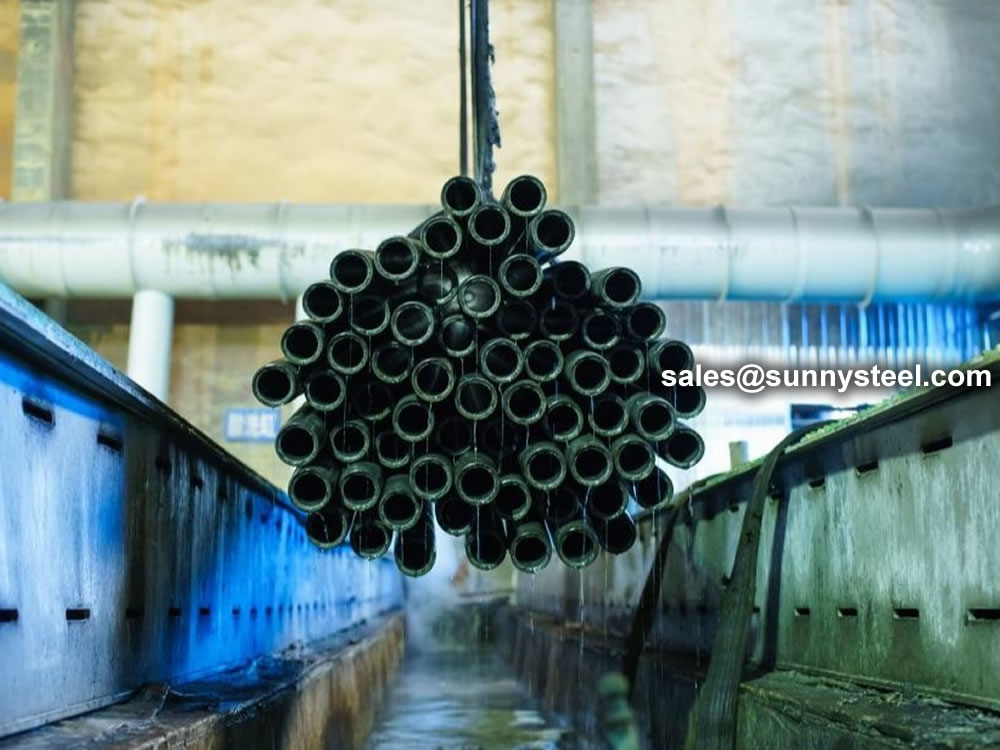
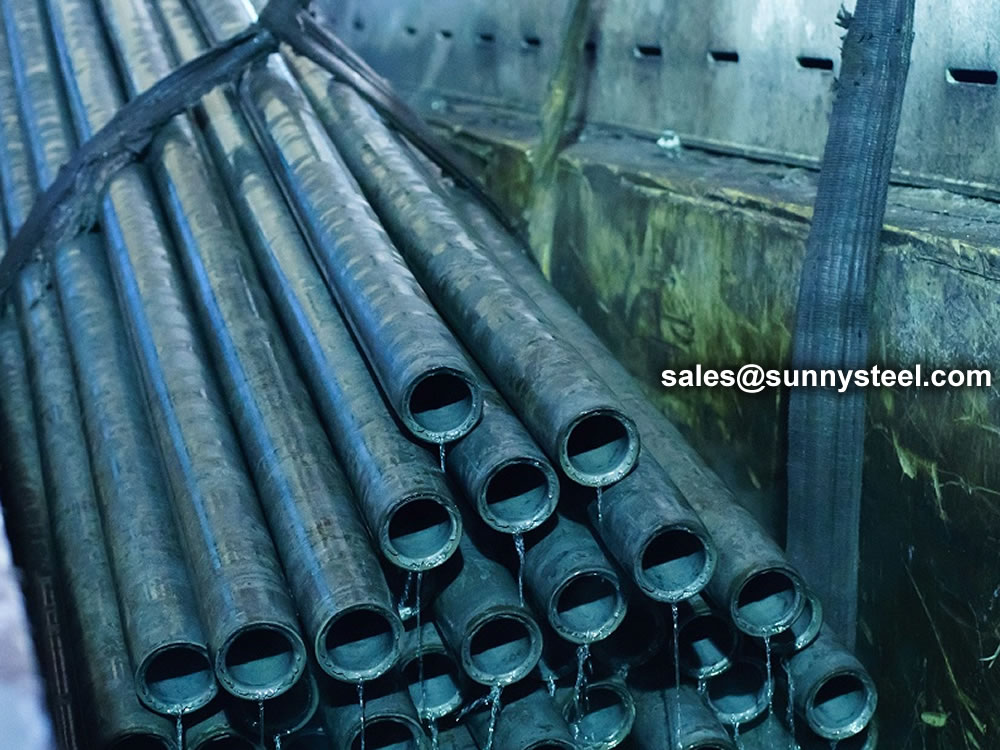
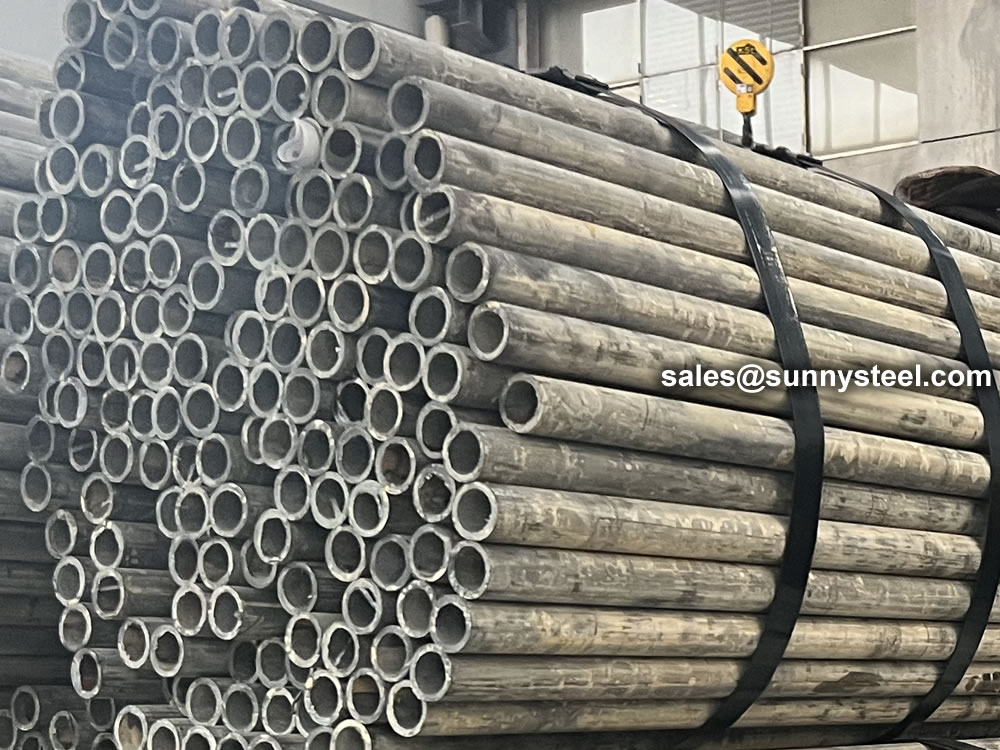
This process is often used to prepare the surface of steel or iron materials for painting, coating, or other finishing procedures.
Carbon Steel: 10#, 20#, 35#, 45#, S45C, 55#, Q235B, Q235C, Q345D, CF53, A105
Alloy Steel: 16Mn (Q345B), 20Cr, 40Cr, 15CrMo, 20CrMo, 28CrMo, 30CrMo, 35CrMo, 42CrMo, 4130, 4140, 20CrMnTi, 40MnMoV, 20Mn2, 37Mn5, ZF6, 16MnCr5, 20MnCr5, 36Mn2V, 38Mn2V, 20Mn2, 65Mn, 15Mo3
Other: Acid Pickling and Phosphating Pipe, Special Materials Available for Customization.
With years of expertise, we provide a diverse array of steel tube processing options. From sawing and machining tube blanks to intricate bending and upsetting operations, we actively assist you throughout your projects.
Our capabilities extend to eccentricity reduction and concentricity enhancement through turning and grinding. We excel in creating complex geometries using processes like rotary swaging and axial forming. Additionally, we offer property modifications via partial heat treatment, ensuring tailored solutions for your specific needs.
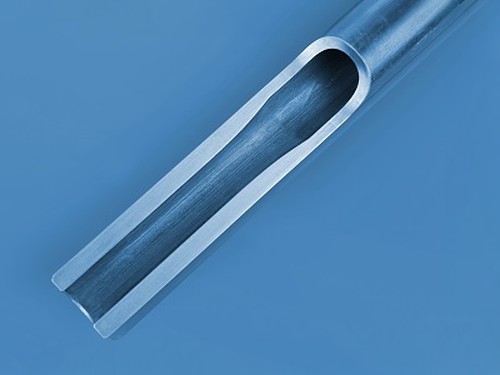
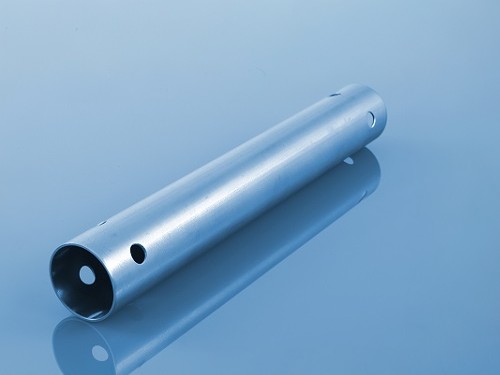
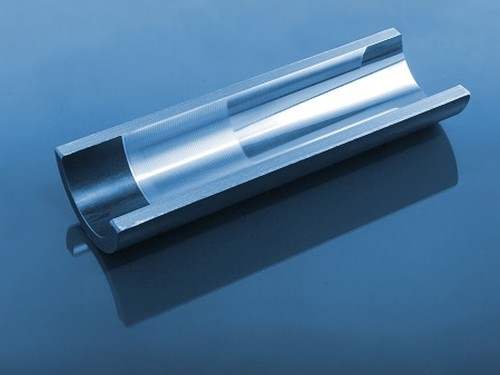
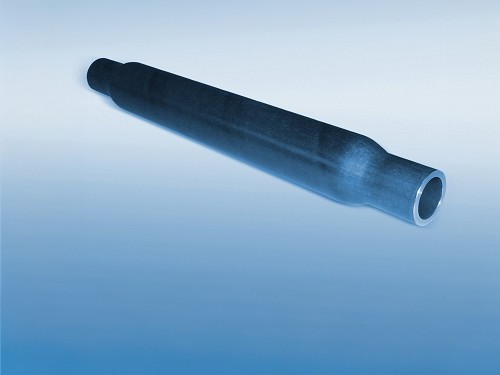

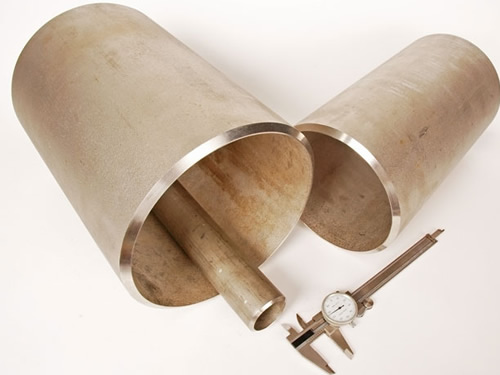
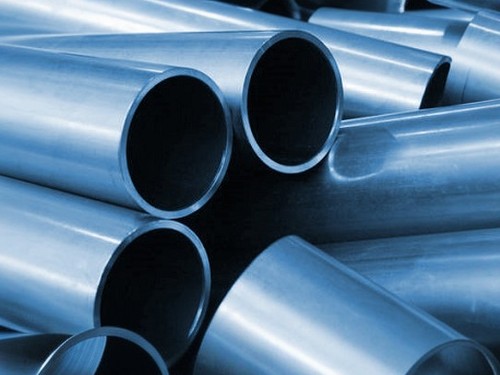
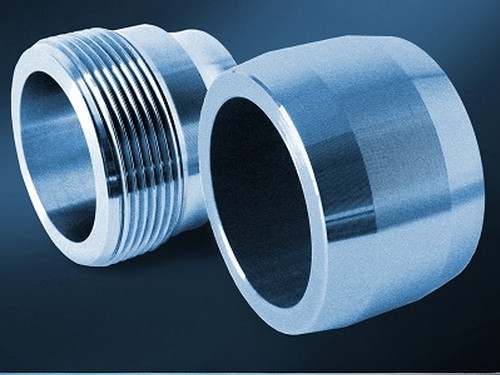
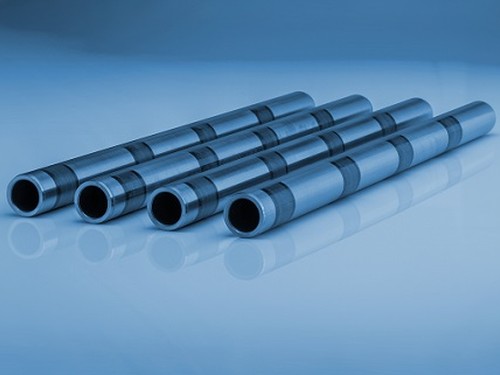

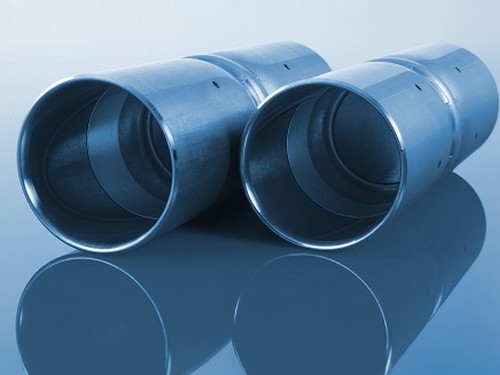

Alloy steel pipes are ideally suitable for chemical, petrochemicals, and other energy-related applications.
The alloy steel pipe adopts high quality carbon steel, alloy structural steel and stainless & heat resisting steel as raw material through hot rolling or cold drawn to be made.
Alloy steel can be used in process area where carbon steel has limitation such as
As an important element of steel products, alloy steel pipe can be divided into seamless steel pipe and welded steel pipe according to the manufacturing technique and tube billet shape.
Here you can see the common alloy steel grade that you will come across.
Why the application of alloy steel pipe is wider than others
There are many kinds of materials used for transport in industrial production. Specifically we will have more choices and it is not limited to the use of alloy steel pipe. But even in the face of more choices, many people tend to choose alloy steel pipe. People make their own choices will have their own reasons. This means the alloy steel pipe application has its own advantages. Compared with transmission lines made of other materials, after it meets the basic application requirements, its quantity is lighter. Then in the practical application of alloy steel pipe, it will have more advantages because of this. Besides its physical characteristic advantage, it also has economic advantages. The wide application of alloy steel pipe is with kinds of reasons. So in practical usage, we can exploit the advantages to the full, in this way can we get more profits in these applications of alloy steel pipe.
The transportation of kinds of gases or liquids in production needs to rely on alloy steel pipe. This shows that the actual role of alloy steel pipe application is important. High temperature resistant and low temperature resistant is the tolerance of temperature. In the practical application of alloy steel pipe, there will be many materials need to be transported. However their temperatures are not the same. So this can be the basic requirement to alloy steel pipe. It needs more corrosion resistance. Corrosion resistant material is the best material during transporting, because it is corrosion resistant. So it can be used in more occasions. And it is definitely very convenient for users.
Can be 100% recycled, environmentally friendly, energy-saving, resource conservation, national strategy, national policy to encourage the expansion of the field of application of high-pressure alloy pipe. Of alloy steel pipe total consumption accounted steel in the proportion is only half of the developed countries, to expand the field of use of the alloy steel pipe to provide a wider space for the development of the industry. The future needs of the average annual growth of China’s high-pressure alloy steel pipe long products up to 10-12%.
Alloy Steel pipe contains substantial quantities of elements other than carbon such as nickel, chromium, silicon, manganese, tungsten, molybdenum, vanadium and limited amounts of other commonly accepted elements such as manganese, sulfur, silicon, and phosphorous.
Our team of experienced sales specialists proudly partners with gas and chemical processors, power generation plants, oil refineries, and related industries to offer piping components and value-added services.
The biggest advantages of alloy steel pipe can be 100% recycled, environmentally friendly, energy-saving, resource conservation, national strategy, national policy to encourage the expansion of the field of application of high-pressure alloy pipe. Of alloy tube total consumption accounted steel in the proportion is only half of the developed countries, to expand the field of use of the alloy tube to provide a wider space for the development of the industry. According to the Chinese Special Steel Association alloy pipe Branch Expert Group, the future needs of the average annual growth of China’s high-pressure alloy pipe long products up to 10-12%.
Chemical composition inspection, mechanical properties test(tensile strength,yield strength, elongation, flaring, flattening, bending, hardness, impact test), surface and dimension test,no-destructive test, hydrostatic test.
identification of the chemical composition of the metal used to manufacture the fitting. Uses PMI sensors, including X-ray fluorescence or optical emission spectrometry.
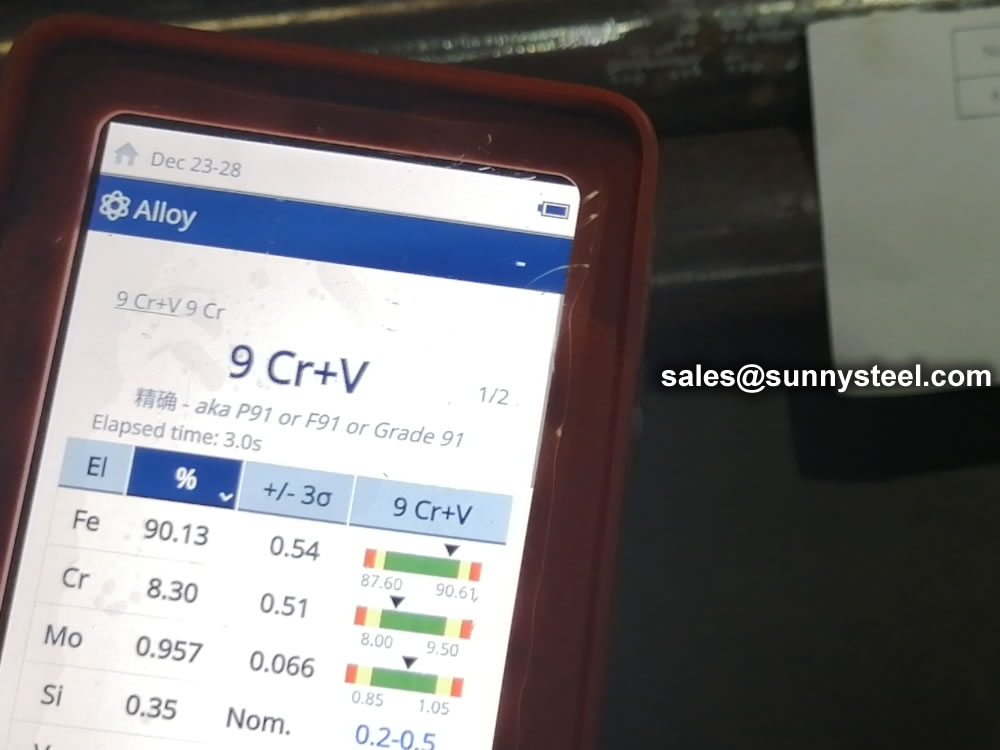
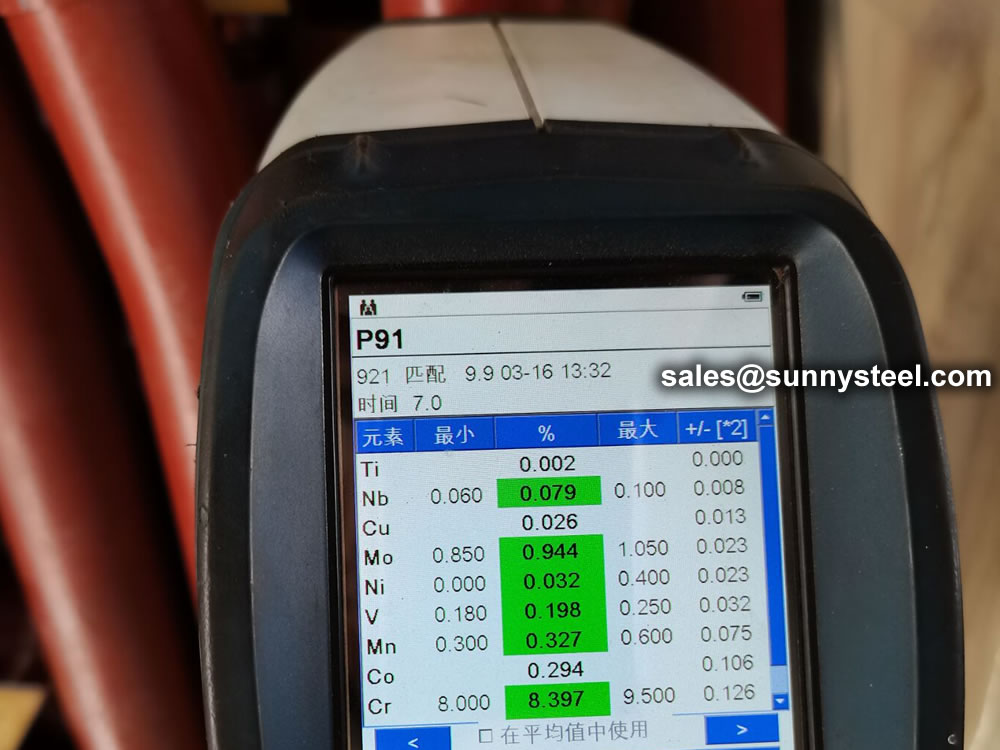

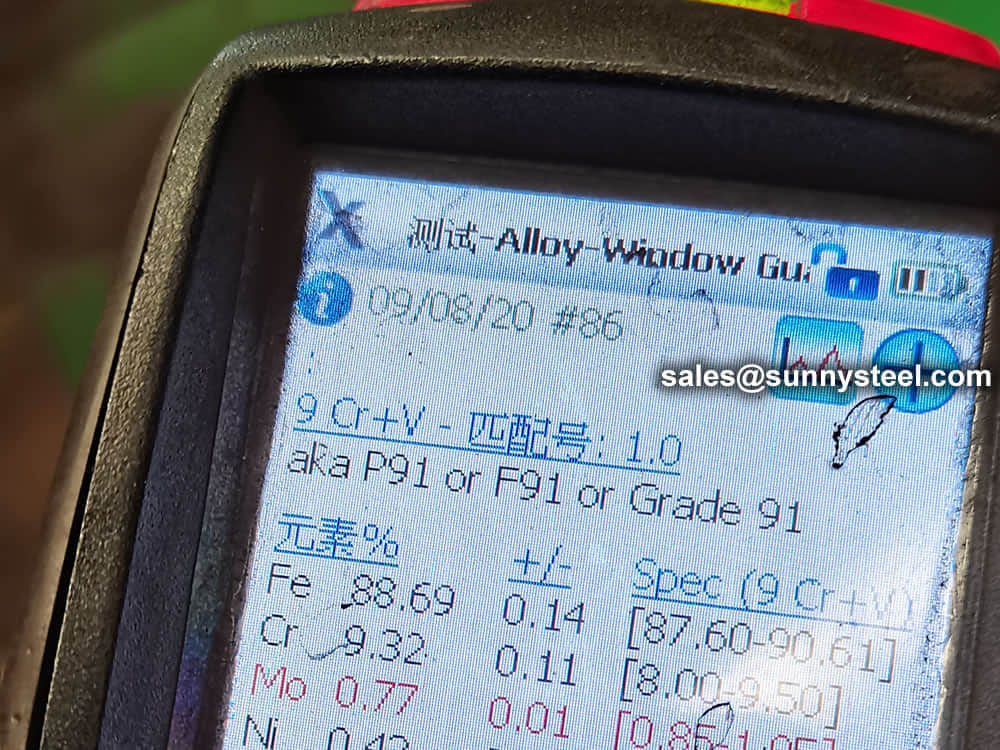
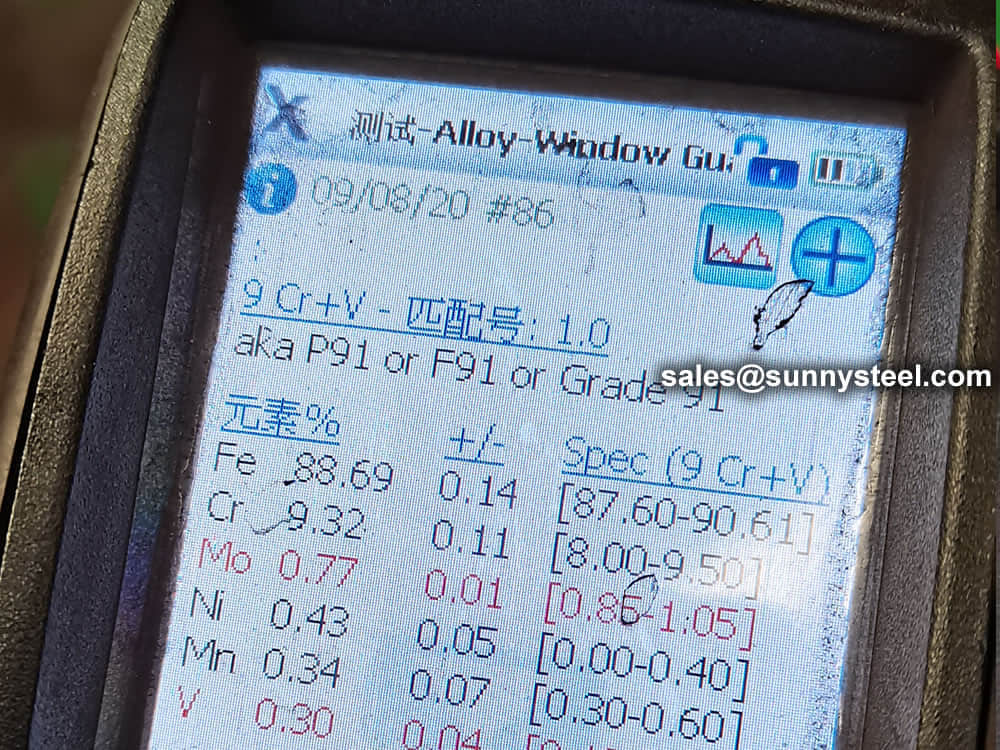


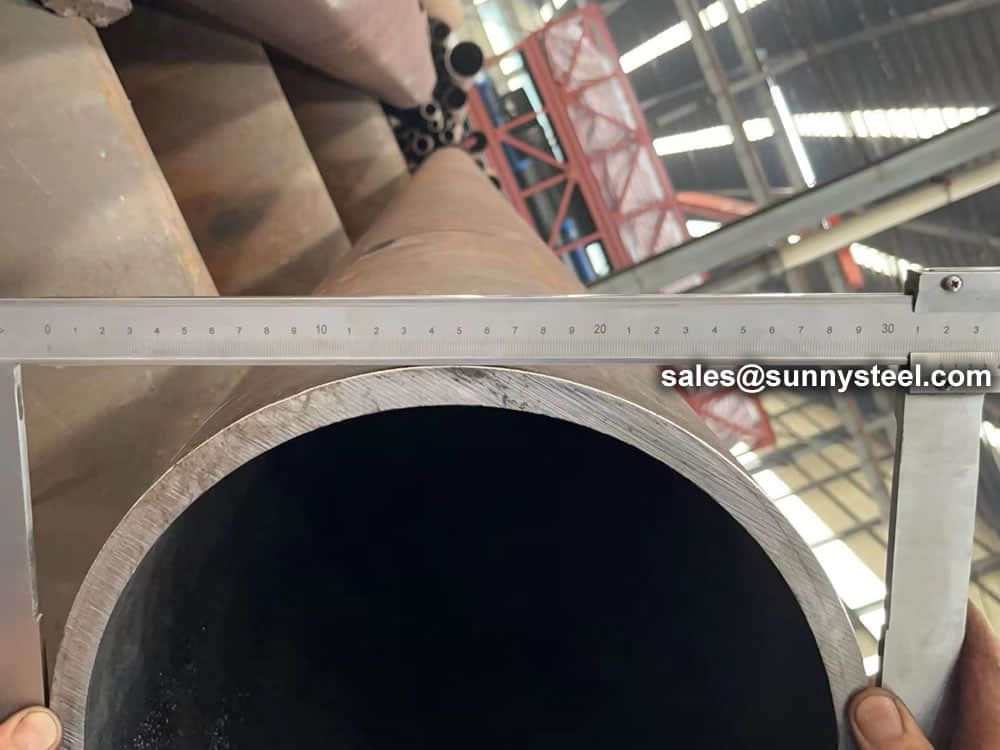
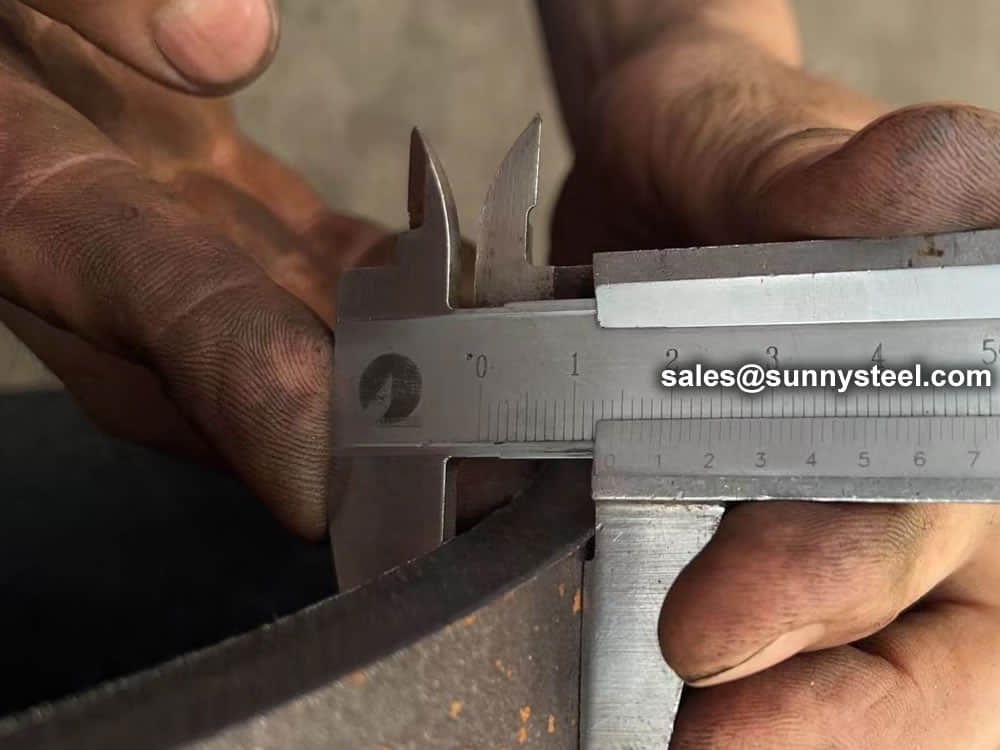
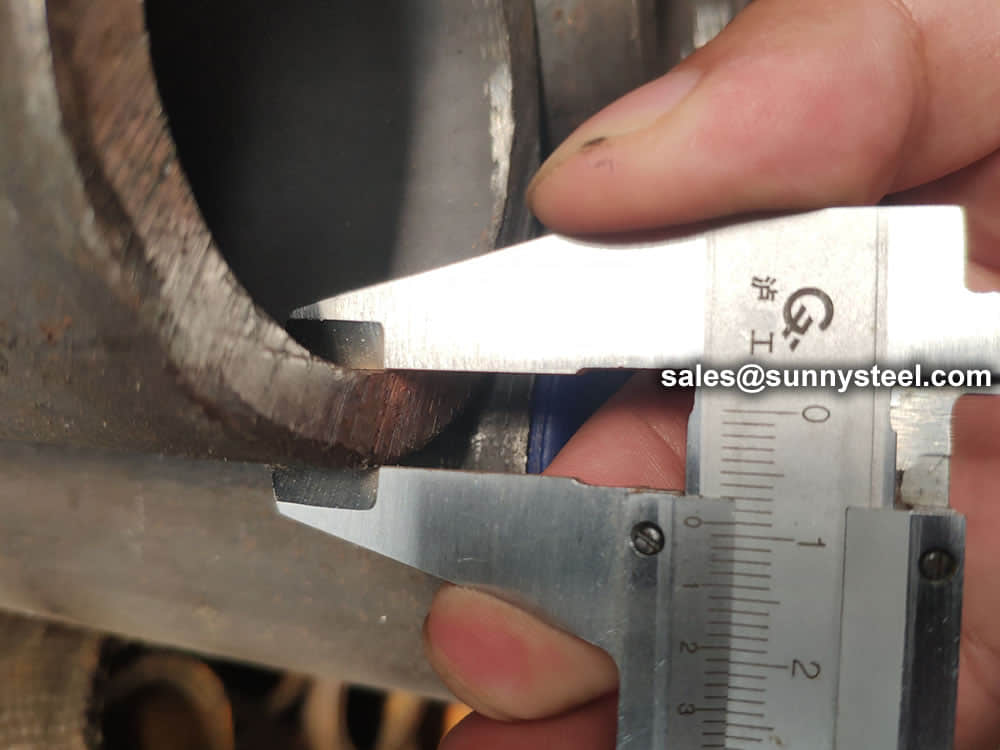
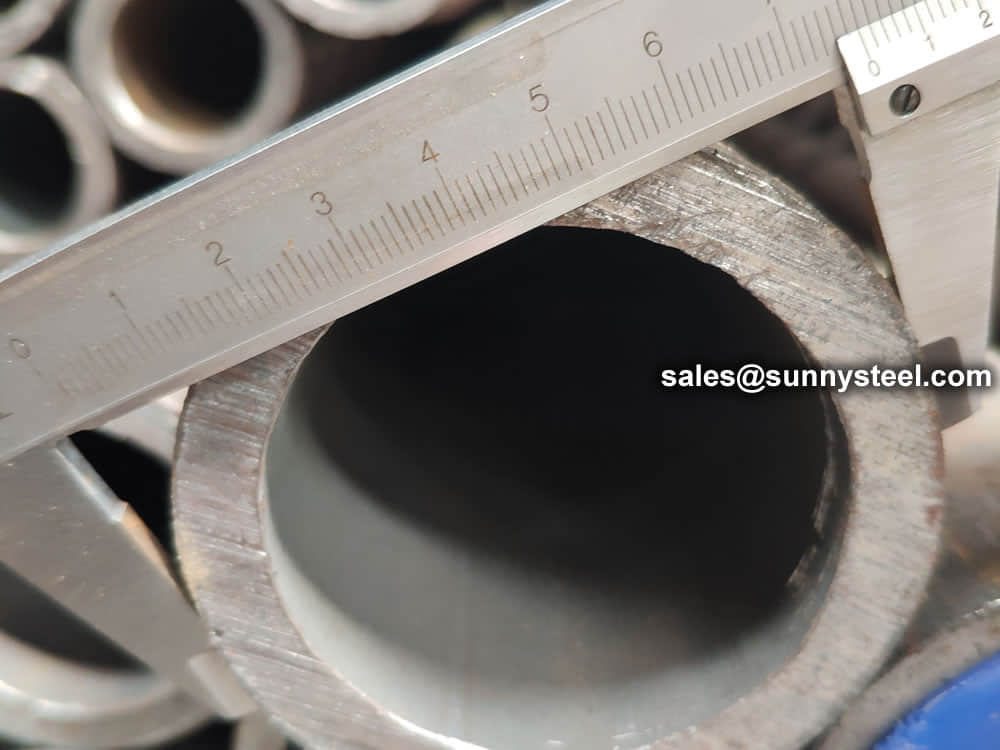
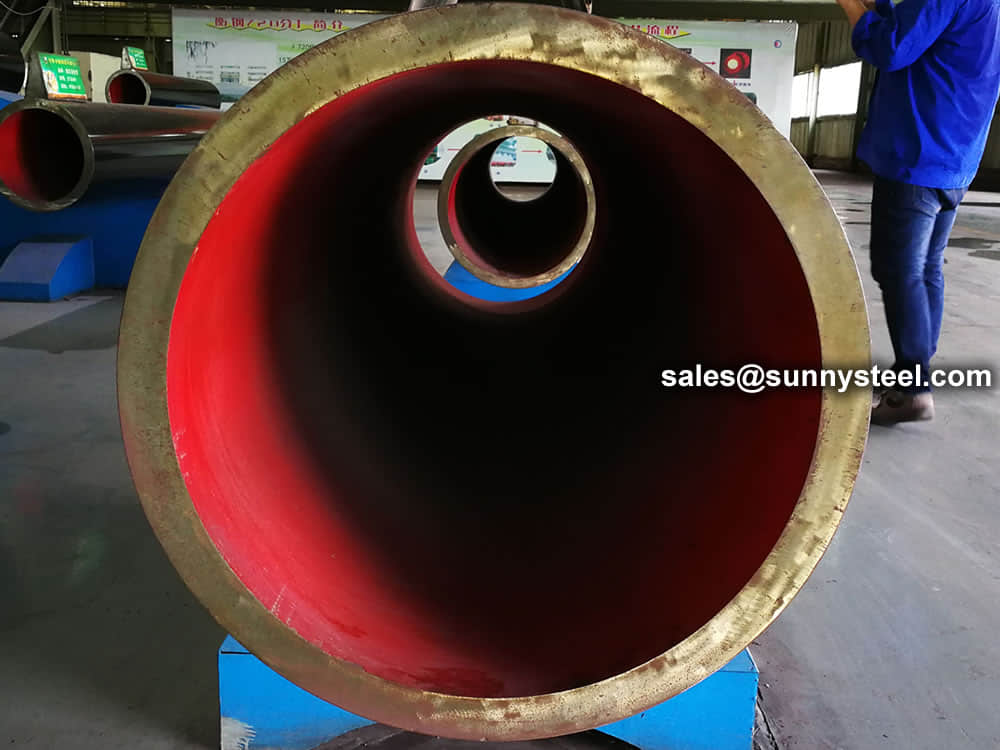
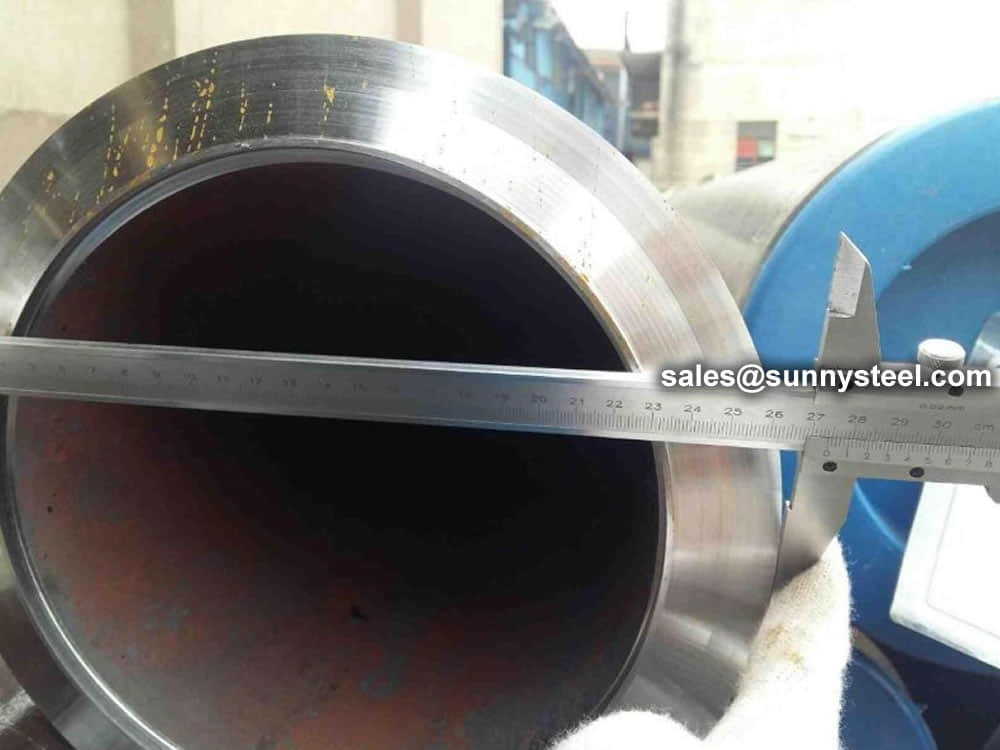
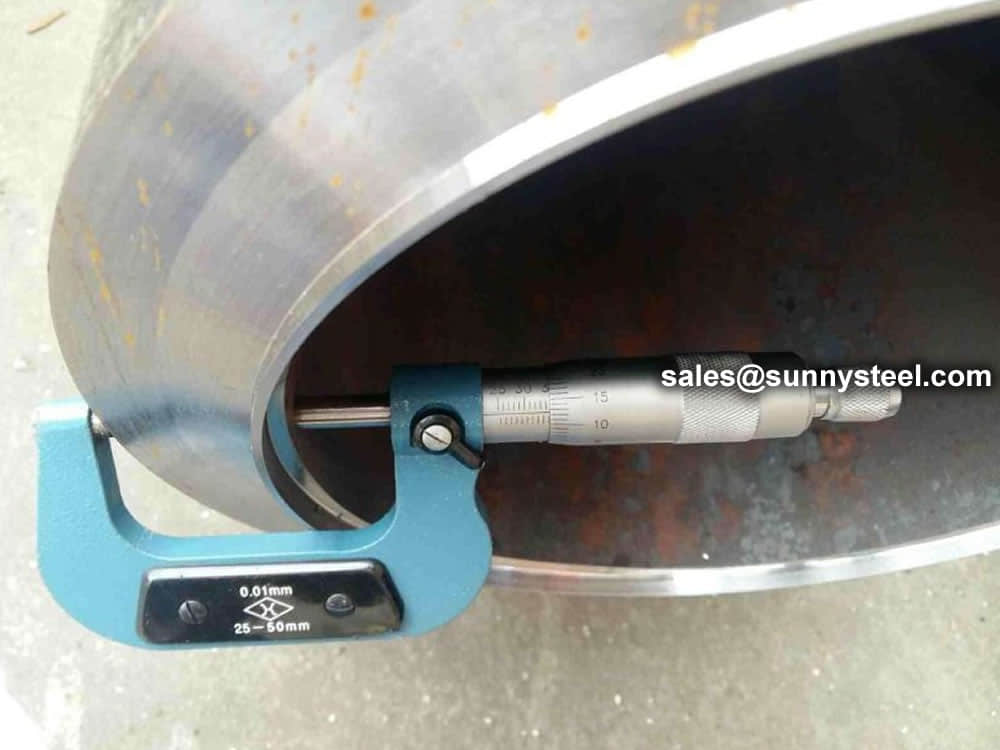
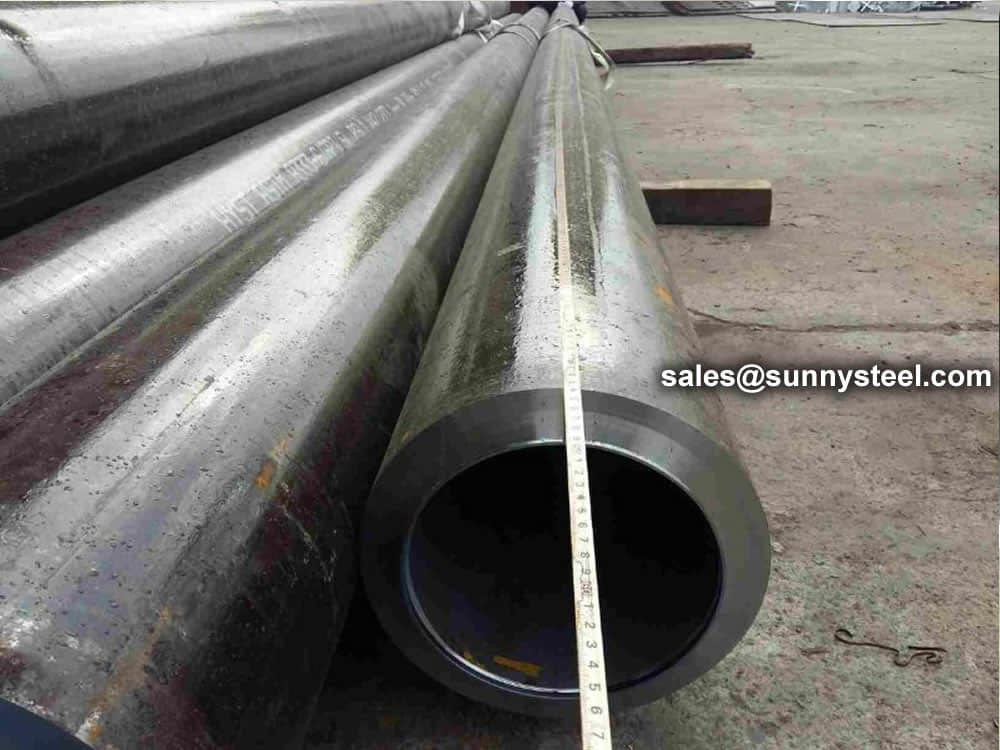
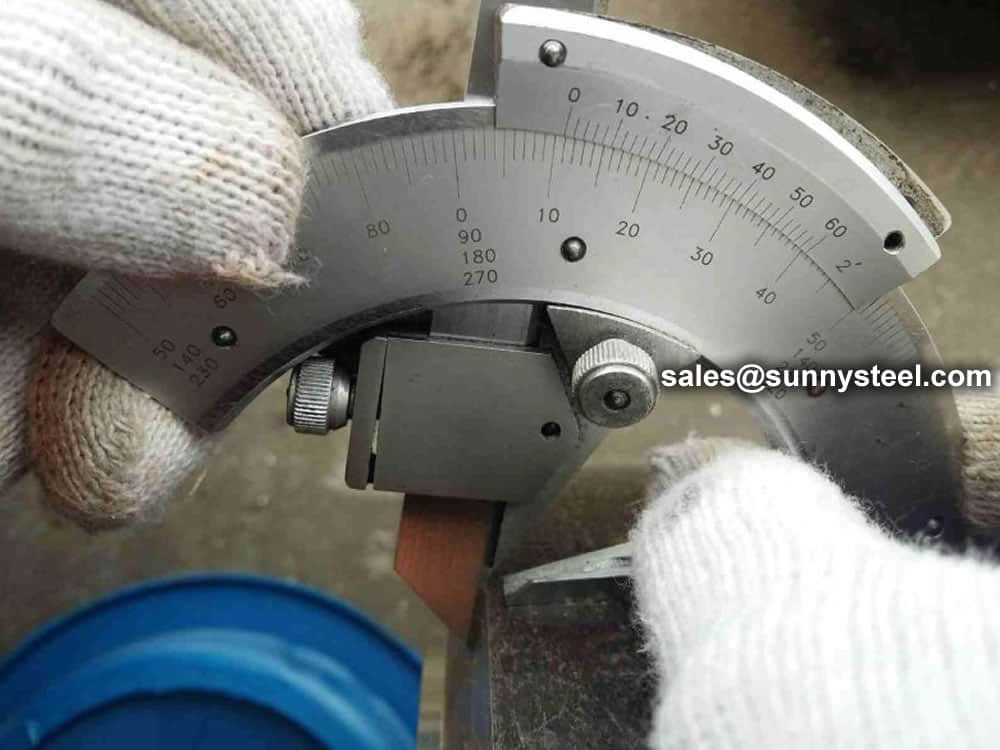
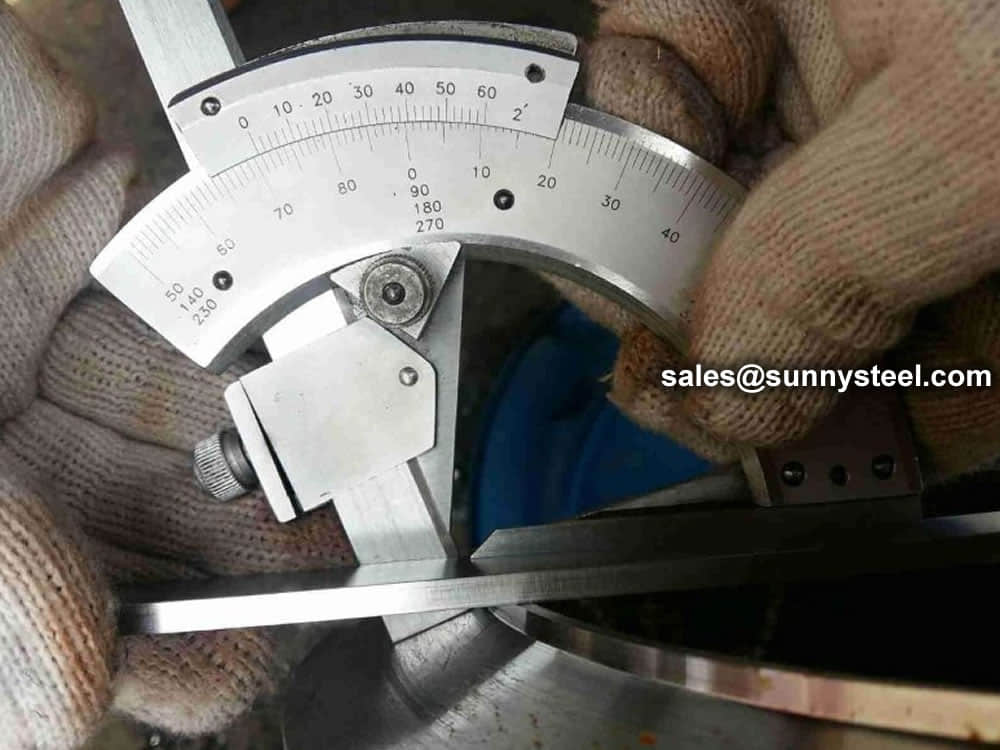
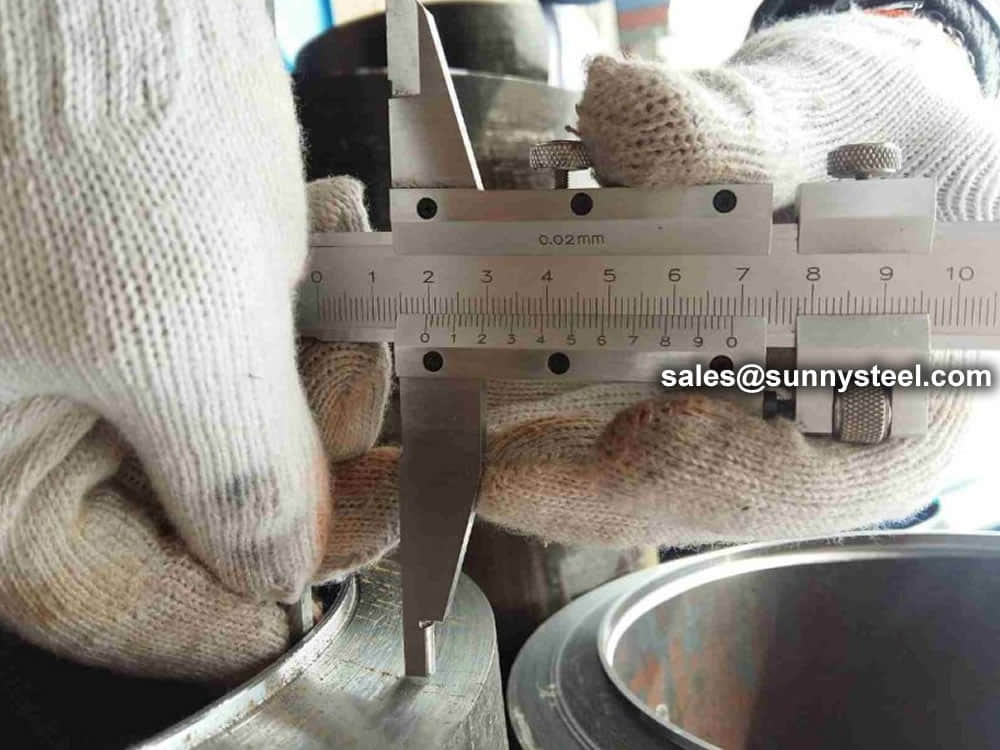
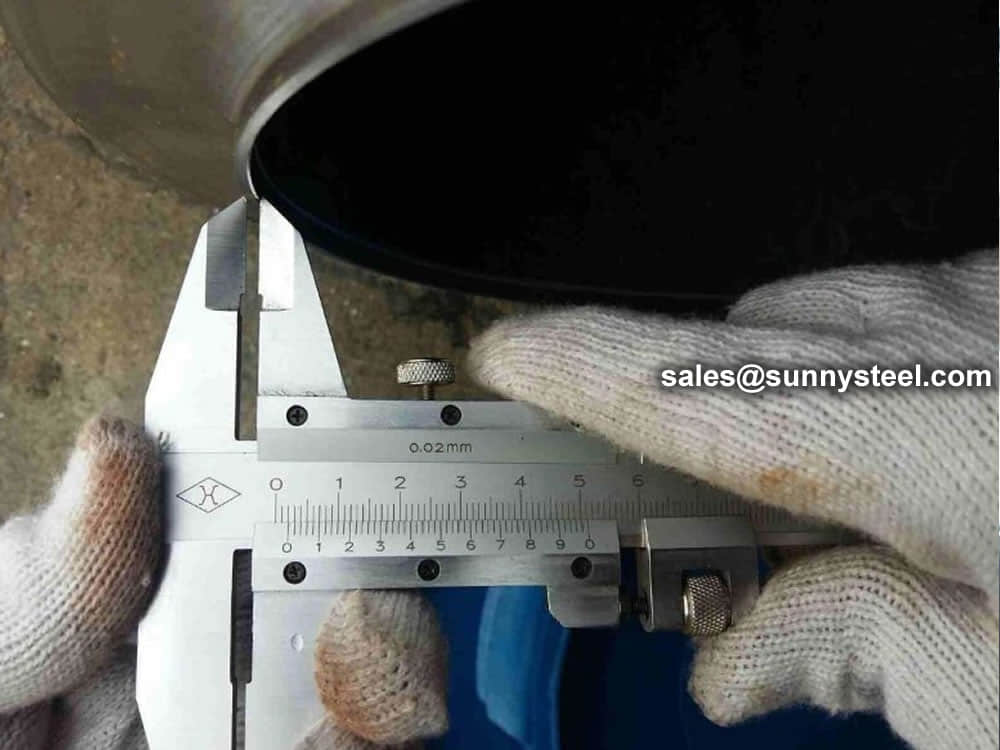

Steel pipe delivery status(condition): cold / hard (BK), cold / soft (BKW), after cold stress relief annealing (BKS), annealing (GBK), normalized (NBK).
| Term | Symbol | Explanation |
|---|---|---|
| Cold-finished/hard (cold-finished as-drawn) | BK | No heat treatment after the last cold-forming process. The tubes therefore have only low deformability. |
| Cold-finished/soft (lightly cold-worked) | BKW | After the last heat treatment there is a light finishing pass (cold drawing) With proper subsequent processing, the tube can be cold-formed (e.g. bent, expanded) within certain limits. |
| Annealed | GBK | After the final cold-forming process the tubes are annealed in a controlled atmosphere or under vacuum. |
| Normalized | NBK | The tubes are annealed above the upper transformation point in a controlled atmosphere or under vacuum. |
The general cold strip mills, volume should go through continuous annealing (CAPL unit) to eliminate cold hardening and rolling stress, or batch annealing reach the mechanical properties of the corresponding standard specifies. Cold rolled steel surface quality, appearance, dimensional accuracy better than hot-rolled plate, and right-rolled thin product thickness is about 0.18mm, so the majority of users favor.
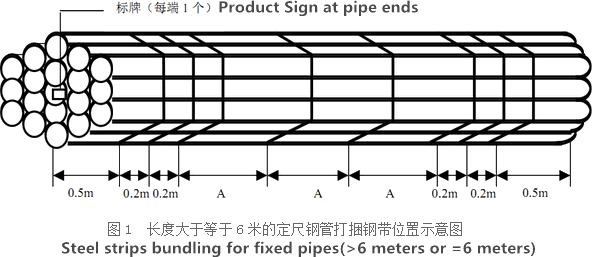
Cold rolled steel coil substrate products deep processing of high value-added products. Such as electro-galvanized, hot dip galvanized, electro-galvanized fingerprint resistant, painted steel roll damping composite steel, PVC laminating steel plates, etc., so that the excellent quality of these products has a beautiful, high resistance to corrosion, has been widely used.
Cold rolled steel coil finishing after annealing, cut the head, tail, trimming, flattening, smooth, heavy volume, or longitudinal clipboard. Cold-rolled products are widely used in automobile manufacturing, household electrical appliances, instruments, switches, buildings, office furniture and other industries. Steel plate strapping package weight of 3 to 5 tons. Flat sub-volume typically 3 to 10 tons / volume. Coil diameter 6m.
Bare packing/bundle packing/crate packing/wooden protection at the both sides of tubes and suitably protected for sea-worthly delivery or as requested.
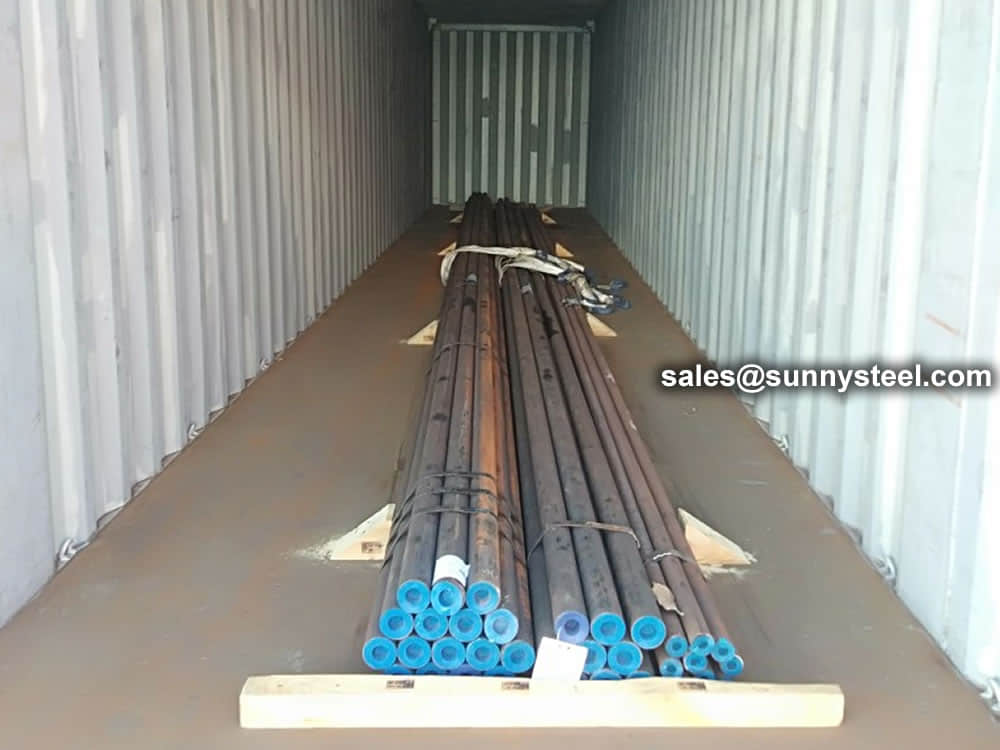
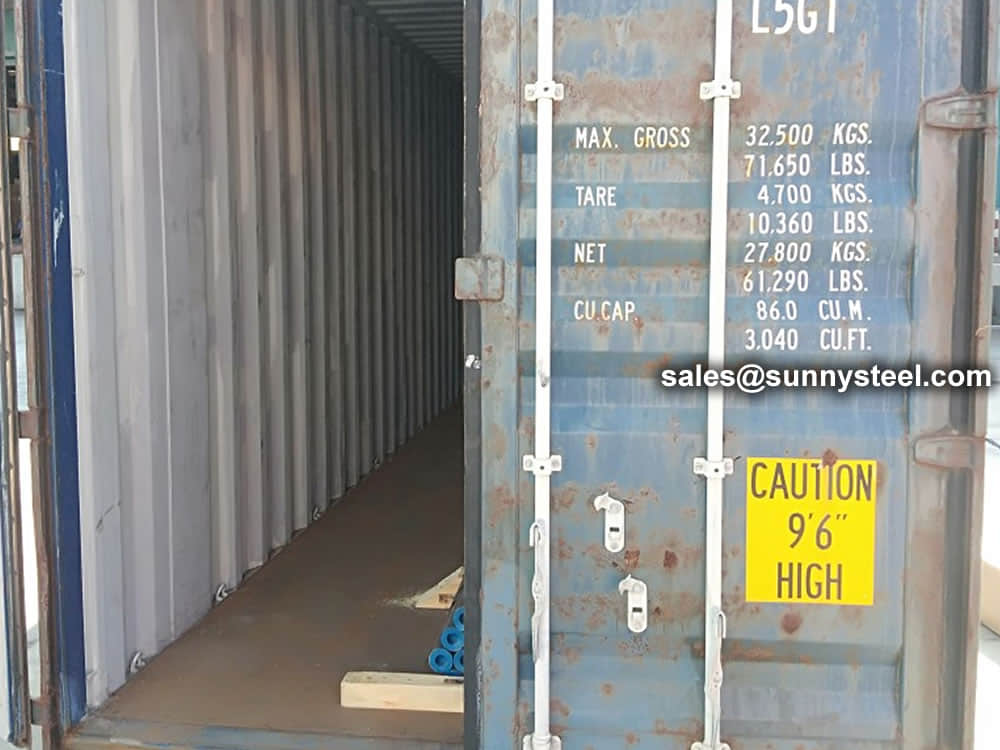
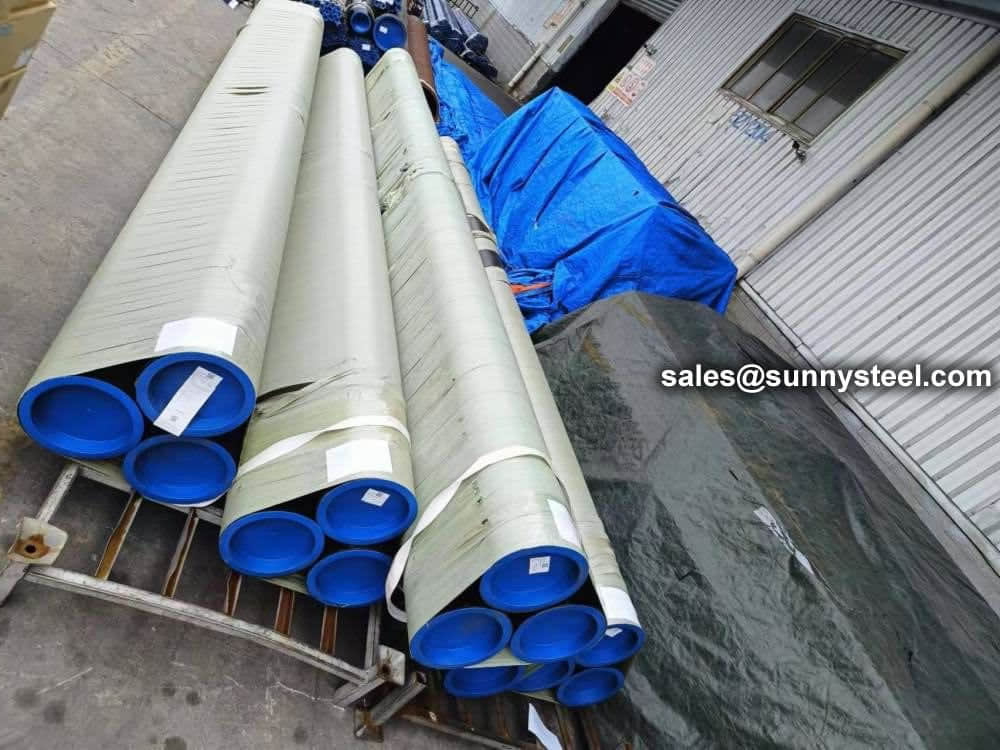
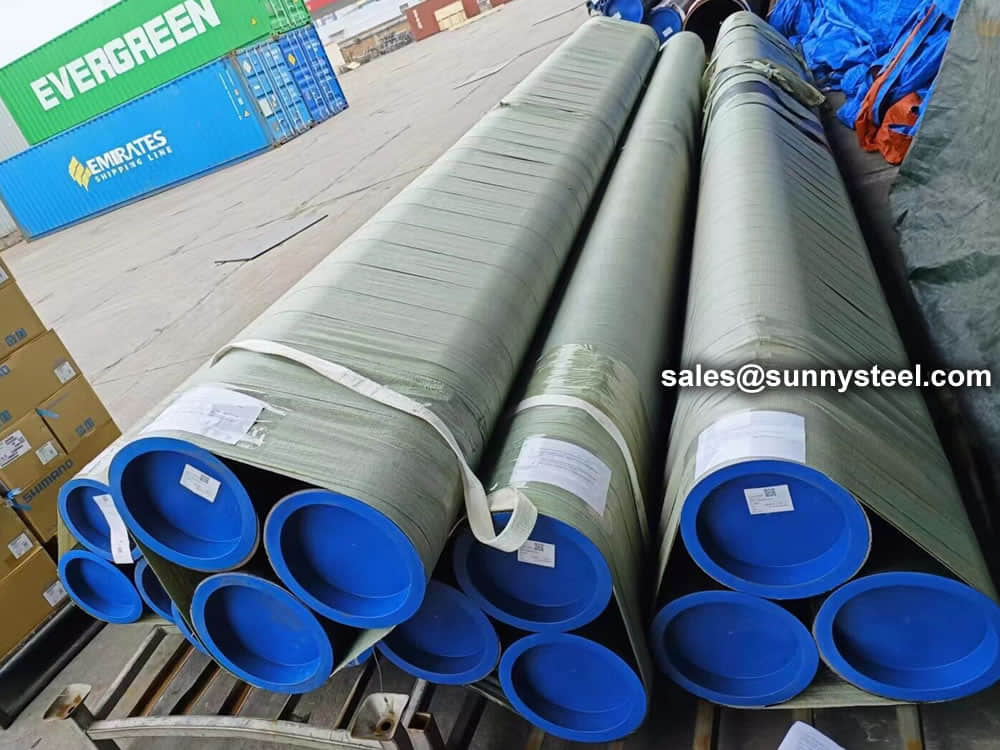
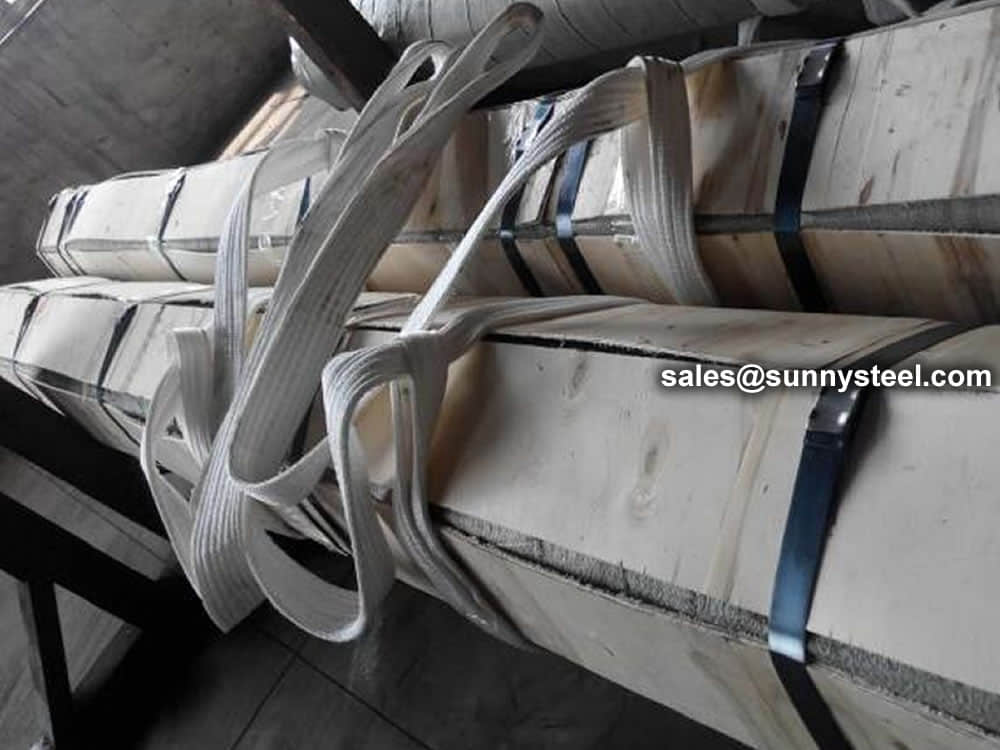



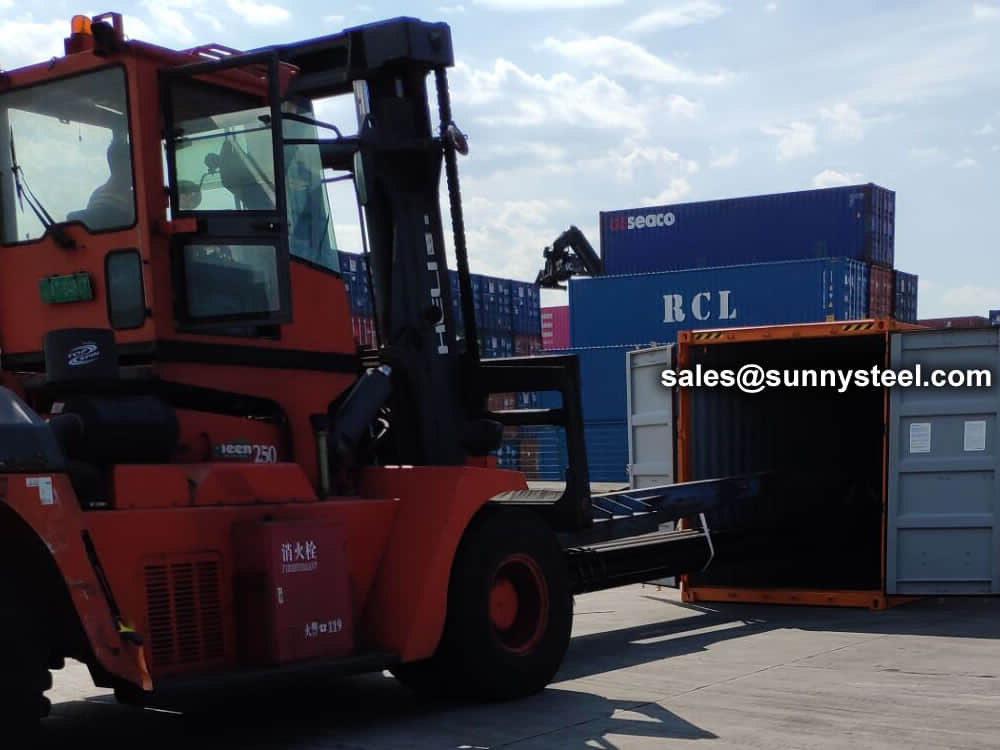

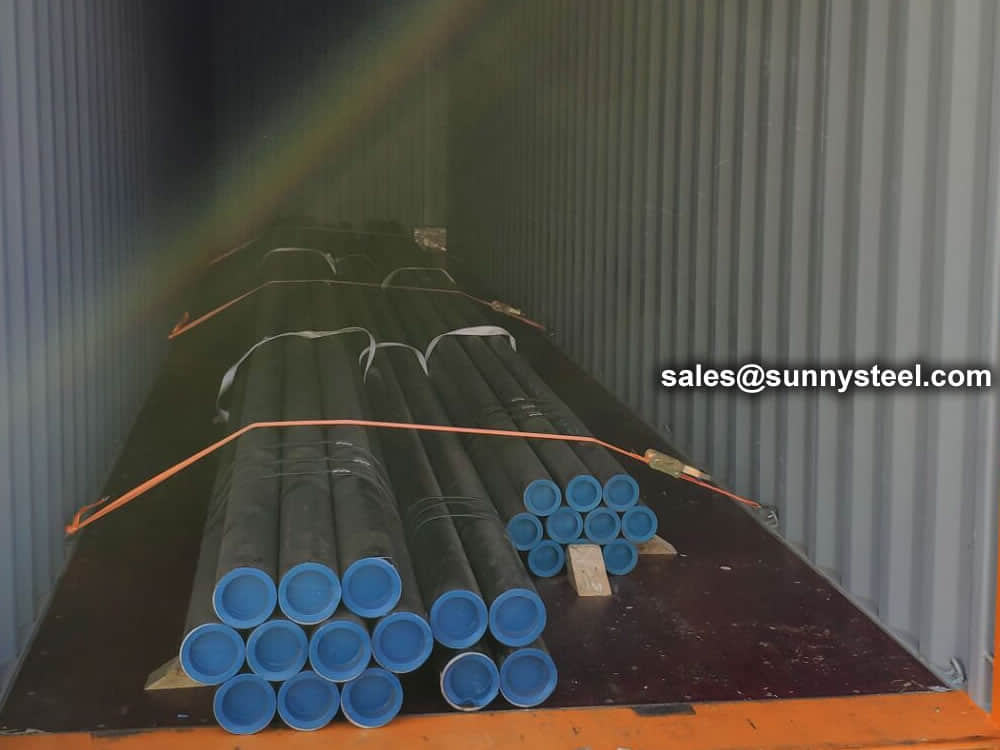
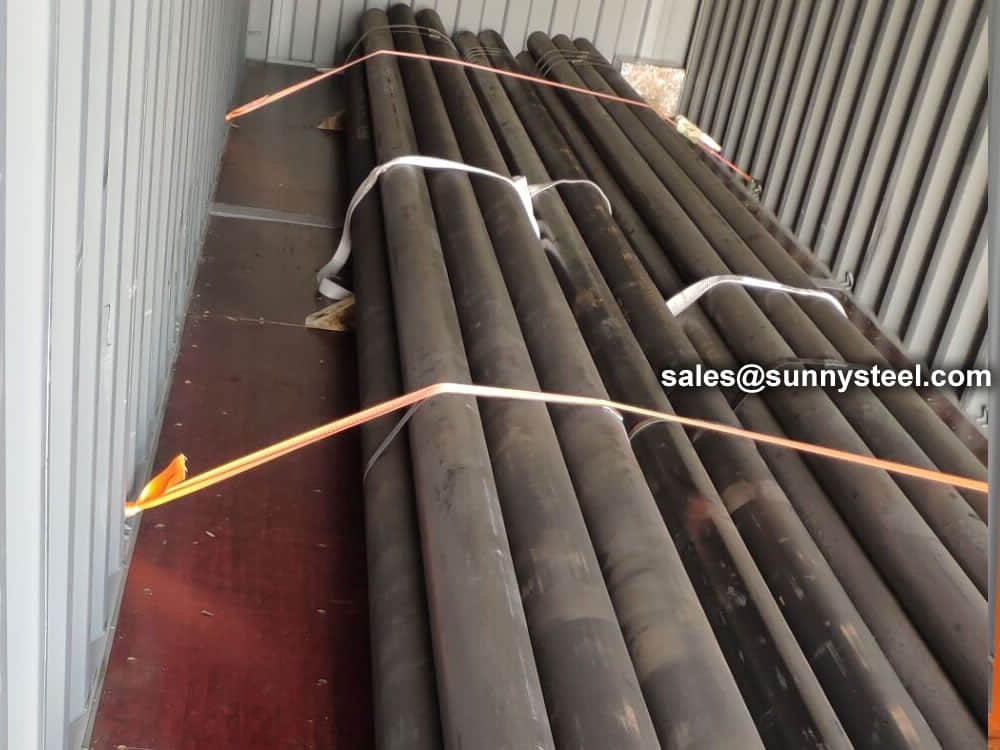
There are probably hundreds of different methods for packing a pipe, and most of them have merit, but there are two principles that are vital for any method to work prevent rusting and Sea transportation security.
Our packing can meet any needs of the customers.
Commonly used alloying elements and their effects are listed in the table given below.
| Alloying Elements | Effect on the Properties |
|---|---|
| Chromium | Increases Resistance to corrosion and oxidation. Increases hardenability and wear resistance. Increases high temperature strength. |
| Nickel | Increases hardenability. Improves toughness. Increases impact strength at low temperatures. |
| Molybdenum | Increases hardenability, high temperature hardness, and wear resistance. Enhances the effects of other alloying elements. Eliminate temper brittleness in steels. Increases high temperature strength. |
| Manganese | Increases hardenability. Combines with sulfur to reduce its adverse effects. |
| Vanadium | Increases hardenability, high temperature hardness, and wear resistance. Improves fatigue resistance. |
| Titanium | Strongest carbide former. Added to stainless steel to prevent precipitation of chromium carbide. |
| Silicon | Removes oxygen in steel making. Improves toughness. Increases hardness ability |
| Boron | Increases hardenability. Produces fine grain size. |
| Aluminum | Forms nitride in nitriding steels. Produces fine grain size in casting. Removes oxygen in steel melting. |
| Cobalt | Increases heat and wear resistance. |
| Tungsten | Increases hardness at elevated temperatures. Refines grain size. |
